The brave Diggers who changed the course of the Korean War
Of the handful of fierce battles fought by the 3rd Battalion of the Royal Australian Regiment during the Korean War, none was more crucial to the war’s outcome than the Battle of Kapyong in 1951.
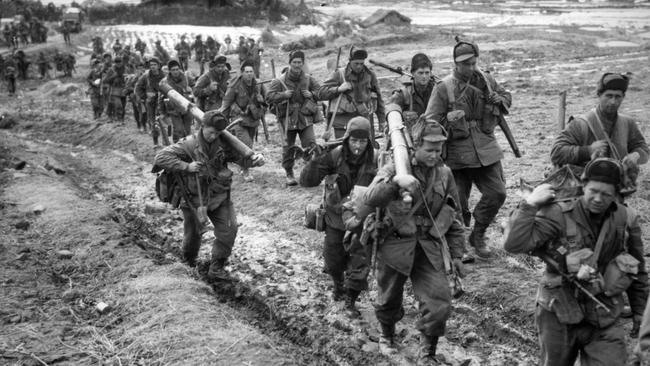
Those who served in World War II, and were lucky enough to survive, came home to a hero’s welcome. But the reception was markedly different for those returning from the Korean War only a few years later. After being wounded in Korea, evacuated to Japan then sent back to rejoin the fight, Signals Sergeant Jack Gallaway returned to Australia for good in February 1952. The war had been raging for more than 18 months and had more than a year to run. Gallaway, a 25-year-old from Brisbane, had served with the Royal Australian Navy in World War II – he’d volunteered while still at school, and lied about his age – and he was struck by people’s indifference to the new conflict raging in the Far East. Gallaway recalled “walking into hotels where I met old friends who said, ‘Where have you been?’ And I said, ‘Korea.’ And they said, ‘What the hell were you doing over there?’”
Other Korean War veterans remembered being rebuffed by RSL clubs because “that wasn’t a proper war”.
Overshadowed by the two world wars that preceded it, the Korean War was one of the landmark events of the 20th century, a product of Cold War machinations whose outcome remains bitterly contested to this day. In January this year, more than 70 years after the war ended, North Korean leader Kim Jong Un declared South Korea his country’s “primary foe and invariable principal enemy”, telling the Supreme People’s Assembly that North Korea would no longer pursue reconciliation with South Korea, putting an end to the decades-long pursuit of a peaceful unification.
It was Kim Jong Un’s grandfather, Kim Il Sung, who started the war, sending North Korean troops and tanks across the 38th parallel – the post-war demarcation line that separated the Soviet-aligned north from the US-aligned south – on June 25, 1950. Within hours it was clear that the badly trained and poorly equipped South Korean army was facing catastrophe.
With the Soviets boycotting the United Nations, North Korea ignored a UN resolution calling for an end to the fighting and the immediate withdrawal of its troops. When the UN called for contributions to a US-led multinational force to repel the communist invaders, Australia was among the first nations to respond.

Jack Gallaway witnessed Australians’ disdain for communism after taking on a role training new recruits at the army’s Puckapunyal camp in Victoria. “We were doing what you might call a pub crawl, walking up Collins Streets [in Melbourne] from one hotel to another. A friend of mine … walked up to a chap selling the Tribune [communist newspaper], snatched his bundle of newspapers, threw them in the gutter and gave him a backhander. We strolled on as if nothing had happened. I suppose the communist who was selling the newspapers was accustomed to that sort of treatment. He didn’t call the coppers anyway.”
Before arriving in Korea, Gallaway – like many of his mates – thought of the war as a sideshow to what seemed like an unavoidable confrontation with the Soviet Union. He was right about Australians going into battle against a communist superpower, but wrong about the adversary. China had warned that if UN forces invaded North Korea, it would enter the war on the communist side. After US General Douglas MacArthur pushed his troops all the way to the Chinese border, Mao acted on his threat, sending more than 2 million Chinese soldiers into Korea.
The Royal Australian Navy and the Royal Australian Air Force both played significant roles in the Korean War, but during the most intense period of the conflict most of the hard fighting was done on the ground by soldiers of the 3rd Battalion of the Royal Australian Regiment, known as 3RAR. Of the handful of fierce battles fought by 3RAR during the Korean War, none was more crucial to the war’s outcome than the Battle of Kapyong in 1951. It was here, in a rugged valley north of Seoul, that 3RAR and a battalion of Canadian infantry, supported by New Zealand artillery and American tanks – perhaps 3,000 men in all – had the job of halting the Chinese Spring offensive.
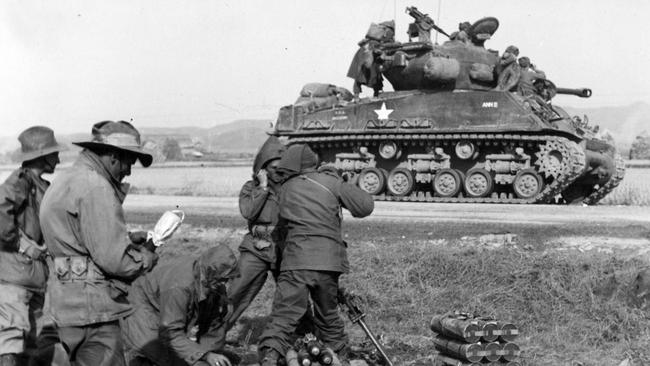
For the Diggers, it was the defining battle of the war – the ultimate expression of Australian military skill, determination and courage. That it happened on the eve of Anzac Day only added to its significance. After the Battle of Kapyong 3RAR would be awarded the rare honour of a Presidential Unit Citation by US President Harry Truman in recognition of its “extraordinary heroism and outstanding performance”. But the battle’s importance went far beyond the bravery and skill of the Diggers who fought it.
The 7km-wide Kapyong Valley was a traditional invasion route for armies marching towards Seoul. “It would have been difficult for a brigade to hold, which is three battalions,” Gallaway recalled later. “If the Chinese had poured through Kapyong they would have been behind the capital, Seoul … behind all of the major headquarters of the United Nations’ army. And the result probably would have been … a withdrawal of the United Nations army from Korea.”
If it weren’t for the disintegration of the 6th South Korean Division, the Diggers would never have been called upon to make a stand at Kapyong. As terrified South Korean soldiers poured south to escape the communist army, the Australians were ordered to occupy high ground overlooking the valley’s main road. Pursuing the South Koreans were 10,000 Chinese soldiers belonging to the 60th Infantry Division.
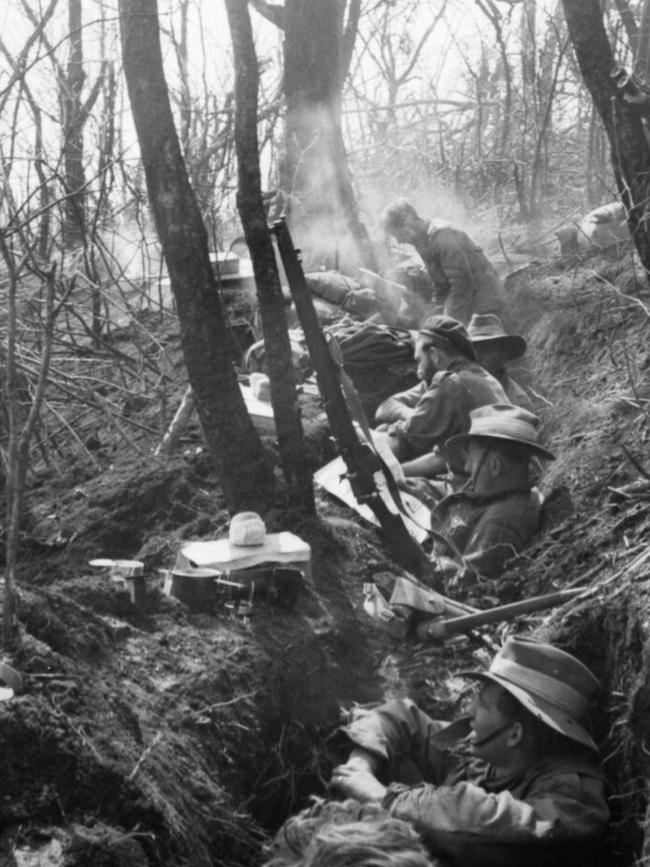
Two companies, a few hundred men in total, were posted astride the road, with Major Ben O’Dowd’s A Company on Hill 504 commanding the road from the east and Captain Darcy Laughlin’s B Company on a ridge dominating it from the west. Two more companies were in position further back on Hill 504. Holding the summit of Hill 504 was crucial, since losing it would enable the Chinese to fire down on the Australians occupying its western slope and jeopardise the Diggers’ ability to control the road.
While the ground held by B Company was suitable for digging, other areas were too rocky. Some men were able to squeeze into crevices or take cover between rock formations. O’Dowd’s company had to make do with piling up loose stones for protection from enemy fire. The low heather scrub covering the slope was tinder-dry from the bitter Korean winter.
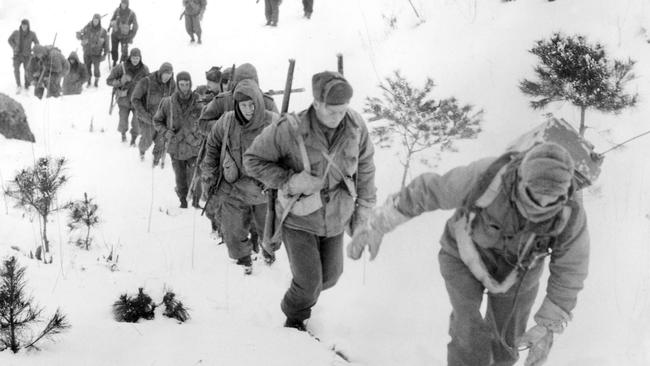
There was little sense of urgency among the Diggers as they took up their positions on the evening of April 23. The information they had received from their commanders was that they should “settle in for a quiet night” before either developing defensive positions where they were, or moving forward. They had done this many times before without firing a shot.
Private John Beresford, a 23-year-old from Murwillumbah in NSW, recalled being told: “There’s nothing to worry about. We’ll be moving first thing in the morning so just dig your pit and have tea and that’ll be it.”
One of those missing from the battalion was Jack Gallaway, who’d been injured while travelling in the back of a truck that overturned. Evacuated to a hospital in Japan, Gallaway would miss the Battle of Kapyong – but not its aftermath.
As darkness fell, the road through the Kapyong Valley was crowded withfleeing South Korean troops, refugees and a growing number of Chinese infiltrators, whose aim was to isolate the Diggers on the western side of the road from the three companies on Hill 504 before circling behind to attack the battalion HQ.
The sight of a South Korean division in headlong retreat, casting off brand new American weapons, clothing and equipment as it went, was nothing new to the Diggers: they had seen the same thing happen on New Year’s Day in response to an earlier Chinese offensive.
Following a well-practised routine, the Australians checked their weapons, then laid out spare ammunition and grenades, and waited. Before long, a full moon rose in the sky, flooding the valley with white light that enabled the Diggers to see for hundreds of metres.
At around 9.30pm the Chinese launched their first attack against five American tanks on the valley floor. Despite the lack of infantry protection, the tanks beat off their attackers before withdrawing to prearranged positions in front of Laughlin’s company.
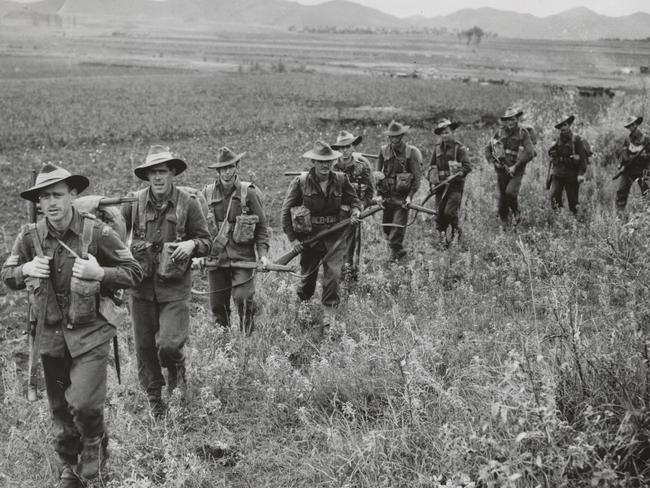
By now heavy fighting had broken out in the battalion HQ area. This coincided with a second and much more determined Chinese attack against the American tanks. Once again, tank commanders had to direct fire from open hatches, with their heads and upper bodies exposed to sniper fire. Within minutes the commander of each tank was hit by rifle fire; the platoon leader was shot between the eyes and killed. The only way to get the Chinese infantry off the tanks was for the tanks to close their hatches and hose each other with machine-gun fire.
An initial assault on Laughlin’s position was driven off with heavy losses to the enemy, the Diggers able to pick off targets easily in the bright moonlight.
These encounters were clearly the prelude to a full-scale attack aimed at throwing the Australians off the high ground on both sides of the road. Failure to achieve this before daylight would leave the Chinese troops on the valley floor exposed not only to a deadly barrage by US tanks and artillery, Australian mortars and Kiwi gunners, but also to bomb, rocket and napalm attacks from aircraft.
The attack on O’Dowd’s company followed a pattern the Australians recognised all too well after their ten months in Korea: a flurry of bugles and whistles as enemy commanders assembled and organised their men, followed by silence as the Chinese soldiers crept up the hill in their noiseless rubber shoes; the clatter of grenades hitting the rocky ground before exploding, and finally the infantry assault as Chinese soldiers rose up in the moonlight, machine-guns blazing.
After each attack wounded Diggers were removed to the reverse slope, where medic Corporal Nobby Clark and his stretcher-bearers did what they could for them, while fit men rushed to occupy the vacant weapon pits. Casualties did not seem to concern the Chinese, who surged forward over the bodies of their own dead and wounded.
A steady Chinese mortar barrage of both high explosive and incendiary bombs continued throughout the night, the latter setting fire to the dry heather. The combination of thick smoke, burning heather and exploding ammunition caused further misery for the wounded Australian soldiers lying out in the open.
The next attack against Laughlin’s company came at 3.30am, when Chinese soldiers struck from three sides. Despite the presence of two Sherman tanks, the Chinese succeeded in penetrating the company’s perimeter and attacking the company headquarters with rifle and machine-gun fire before being driven off with the loss of as many as half their strength killed.
O’Dowd’s position on the eastern side of the road remained precarious. His company suffered 50 casualties that night holding its ground against wave after wave of Chinese attackers. As he did the rounds of the hill, Corporal Pat Knowles was “amazed at the drag marks, blood, cotton wool and bandages where the Chinese had dragged their dead and wounded away during the night”.
The Chinese commanders failed in their efforts to push the Australians off the ridge, but they realised that if the Diggers could be dislodged from the summit of Hill 504, O’Dowd’s depleted troops would be unable to hold. This time they would not wait for darkness. Every Digger on that hill knew what was coming. “It was my 24th birthday on the 24th of April, which was the second day of Kapyong, and I didn’t think I would see another one,” Sergeant Ron Perkins recalled.
At around 7am the Chinese launched their first assault against the summit of Hill 504. The same pattern of attack was repeated every 30 minutes until 10.30am, with each one beaten off at heavy cost to the enemy.
With dozens of wounded soldiers awaiting evacuation, 3RAR’s New Zealand-born commanding officer, Lieutenant Colonel Bruce Ferguson, called the medic, Captain Don Beard. “He said, ‘I’ve arranged with an American tank regiment for a squadron of tanks. We’ll go up there with ammunition and see if we can get the casualties out. Will you come with me?’ Beard recalled. “I didn’t want to go because I had only just got out of the battle. However, of course I said, ‘Yes, sir.’”

As soon as they spotted the tanks moving up the valley, the Chinese started firing. Inside the tanks, Ferguson and Beard listened to the clatter of bullets striking the turret as they trundled towards the battalion’s position. But on the return trip a remarkable thing happened: the Chinese guns fell silent. The tanks made several trips with wounded Diggers strapped to their sides, and each time the Chinese held their fire.
O’Dowd’s men had been hoping the tanks would bring grenades and ammunition for their Owen submachine-guns; what they received instead was high-velocity ammunition designed for heavy machine-guns, which soon stripped the rifling from the barrels of their weapons, rendering them useless. As for food, water and medical supplies, the Diggers on the hill would have to do without.
Only the promised arrival of the Americans’ 5th Cavalry Regiment convinced O’Dowd that his men could hang on, but by early afternoon on April 24 news reached Brigade HQ that the Americans would not be coming after all. The Diggers had been abandoned to their fate. Convinced that 3RAR would not be able to survive another night of Chinese attacks, the commander of the 27th British Commonwealth Brigade, Brigadier Brian Burke, decided to withdraw the Australian battalion.
“Sometime after midday,” O’Dowd recalled, “the commanding officer came on the air to advise me that there was no relief coming our way and I had approval to take a shot at getting the rifle companies out.”
While D Company clung to its position on the summit, O’Dowd got to work planning a fighting withdrawal along a route that – for all he knew – might already have been blocked by the Chinese. Timing was critical. The enemy had had all day to observe the battalion’s actions and O’Dowd considered it an “absolute certainty” that they would renew their assault after dark.
The likelihood of being pursued along the ridge by the Chinese led O’Dowd to adopt a leapfrog-style withdrawal, in which one company stood its ground while another prepared to fall back and the third moved. New Zealand gunners kept the Chinese at bay with a barrage of smoke and high explosive shells, some landing no more than 150m from the Australians.
Some of the Diggers were reluctant to abandon their positions. A few members of D Company felt they were holding on alright and demanded to know why they were being ordered to pull out. But with ammunition running low, staying on was impossible.
By 11.30pm, the withdrawal – described in the official history as “difficult and brilliantly executed”– had been completed at a cost of just one man captured. Australian casualties for the two-day battle were 32 men killed and 59 wounded.
The text of the Presidential Unit Citation made clear the significance of 3RAR’s achievement: “The seriousness of the breakthrough on the central front had been changed from defeat to victory by the gallant stand of these heroic and courageous soldiers.” The Australians’ dogged defence at Kapyong blunted the Chinese Spring offensive and bought time for the UN forces to establish a new defensive line.
Jack Gallaway rejoined the battalion in time to bury the dead at Kapyong, and after the war wrote a history of 3RAR’s Korean campaign. Although he’d missed the battle, Gallaway knew how it had been fought. “It wasn’t a battle where influence could have been brought to bear by great tactics or by brilliant officers,” he said years later. “It was simply a matter of digging in, holding on by your teeth and fighting literally to the last man and the last round. And that’s what they did.”
After Kapyong the Korean Warlapsed into a stalemate that would last until the armistice on July 27, 1953. The war left behind a legacy of distrust between North Korea and South Korea, marked by periodic border skirmishes, kidnappings, espionage and other provocations that continue to this day. Kim Jong Un’s recent assertion of perpetual enmity with South Korea was a stark reminder that while North Korea signed an armistice with its neighbour, it has never made peace.
Anna Fifield, Asia-Pacific editor at The Washington Post and author of The Great Successor: The Secret Rise and Rule of Kim Jong Un, says we should all be concerned by the legacy of an unfinished war that has led to the creation of an impoverished totalitarian state with a nuclear weapons program. While the two Koreas have existed in an uneasy standoff for 70 years, Fifield argues that Kim Jong Un’s latest comments are “more than the usual bluster. [His] calculations seem to have changed and he’s taken a whole bunch of unprecedented steps – not just changing the constitution but destroying monuments to unification and testing new nuclear-capable weapons.”
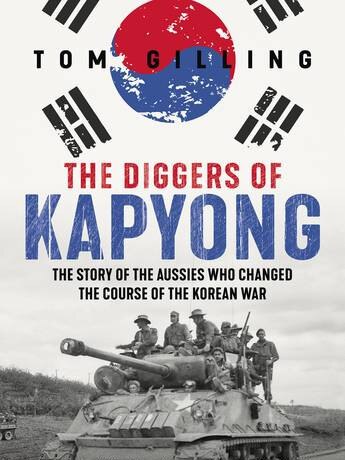
With the US distracted by the Ukraine and Gaza conflicts, Fifield warns that Kim Jong Un could sense an opportunity to launch some kind of attack. “That might be shelling outer South Korean islands, as his military has done before, or something more provocative,” she says. “He appears to almost be girding for a fight.”
Kim’s grandfather showed where that led. b
The Diggers of Kapyong: The Story of the Aussies Who Changed the Course of the Korean War by Tom Gilling is published this month



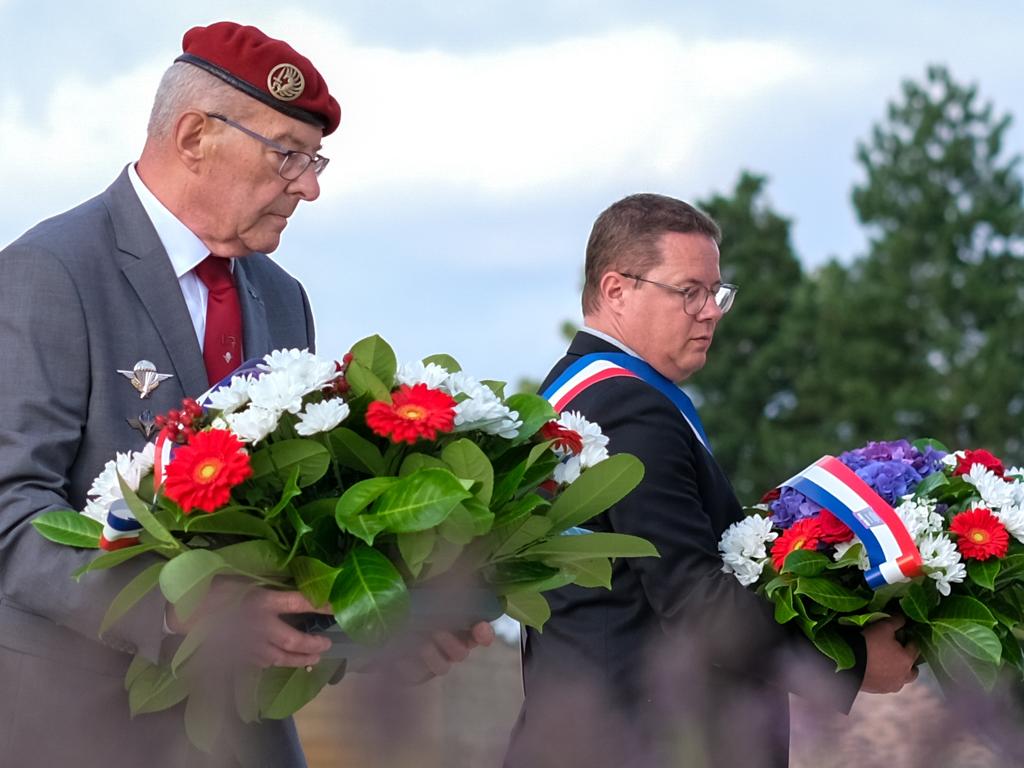
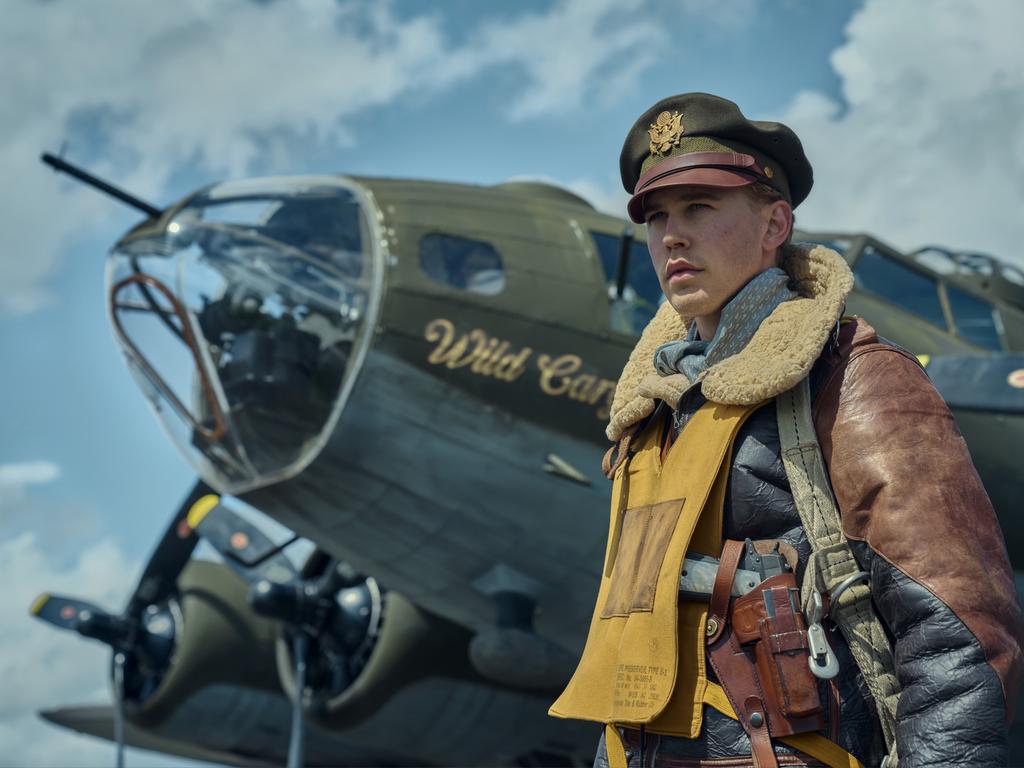
To join the conversation, please log in. Don't have an account? Register
Join the conversation, you are commenting as Logout